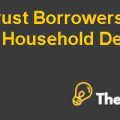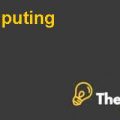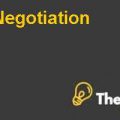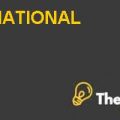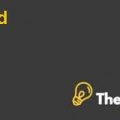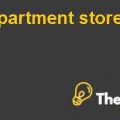Fly Ash Brick Project Case Study Solution
Introduction
The proposed project by Rajiv Sharma to his friend defines it as a business plan of the fly ash brick manufacturing company. Rajiv has years of experience in the construction industry and has good contacts, and he knows about the potential of fly ash bricks in the market due to increasing construction in the market would raise the demand for these bricks.
However, fly ash is a wastage of the power generation sources that generate power through the coal. Fly ash is the residue obtained by the combustion of the coal. Thus, it is collected at various stages of the thermal power generation process. Itis anticipated that production of ash would increase due to the use of coal as the prime fuel for many years ahead.
Fly ash is the wastage that could be used to produce the fly ash bricks that is comparatively good against the other bricks produced through burnt clay. However, the ash brick consists of four materials to produce fly ash brick; sand; gypsum; lime, and the process is to make in the form of a paste, transfer to moulds fitted in the hydraulic press, where it would take one to two days to dry.
The market has the potential to adopt the ash bricks because it is anticipated that there would be a shortage of 20 million to 70 million home units to accommodate the increasing population of India. It was a great business opportunity because there is a huge gap in the construction industry to sell a new product, which is much reliable than conventional bricks. On the other hand, a single unit of brick in the market would be sold for 7 rupees per unit.
So, coming back to investment proposal, it is important to know that how much the company would need to invest in the fixed assets, a well as what should be its working capital. If the company has the production capacity of 4 million bricks annually, then the question arises as to how much should the company make the sell to be on break even point.Moreover,another question that arises is what would be the company’s fixed costs and variable cost.
It is critical to know that how much the company would have are turn on equity and that whether the company would be able to meet its debt obligations that it is supposed to take a mortgage loan from the bank.The company has to ensure that it is earning sufficient amount to meet with future complications of acquiring new plant and equipment since the plant and equipment have five years life with no salvage value.
Question 1
Cost Analysis
Two friends have to prepare a total amount of INR10[1] million. However, 6 million rupees would be invested by partners from their sources. Meanwhile, the remaining amount of 4 million rupees would be provided by the bank in the form of against the mortgage of equipment at the interest rate of 12% per annum.
Similarly, 8 million of the investment would be invested in the fixed assets, which include the building modification, water arrangements, machinery, trucks, and other payload machines. Exhibit 1 shows the amount of each asset. Similarly, the remaining amount of the investment would fulfill the working capital requirements.
Furthermore, the project would have fixed cost irrespective of the depreciation on the plant and equipment, and interest rate which is 12% annually, and salaries expenses, other administration and supplies cost. Exhibit 2 shows the fixed costs in detail, but all fixed costs are calculated on a monthly basis to approach a proper analysis of the project.
Furthermore, the project would incur these costs irrespective of the production of the bricks at the plant. Meanwhile, there would be other variable costs that are related to production such as the raw material, electricity, labor cost. Exhibit 3 gives details of the variables cost of INR 900,000 that would incur if they produce 0.2 million bricks in a given month, which means that the variable cost of the producing one ash brick would be INR 4.50.
Question 2
The project would have fixed cost of 393,333 in the given month. However, the cost of producing a single brick would be INR 7 rupees. Meanwhile, the variable cost per brick would be 4.5 rupees. However, it is determined that project would be on break even when the company would produce 157,333 bricks in a given month. See figure 1.
On the other hand, the company would sell one brick at the cost of 7 rupees. Similarly, it would have a total capacity of the producing 4 million bricks in a year.However, due to the demand in the market, it is anticipated that company would be able to sell 2.4 million bricks in the first year of its operations.Moreover, the break even point would help to estimate the expenses of the company.
It would also reveal the cost associated with production. Meanwhile, the project’s feasibility can be judged through the cost of production, and return on the investment. However, it would also provide help to make extra efforts to exceed the break even point to generate profit for the company by reducing the cost of production.
Fly Ash Brick Project Harvard Case Solution & Analysis
Targeted Income
The company would sell one brick for 7 rupees in the market. Whereby, the company has the capacity of producing 4 million bricks per annum. However, itis estimated that the company would sell around 2.4 million bricks in the market so that it would have around 1.28 million earnings before the tax.In order to achieve the target of 2 million before tax,the company would need to sell around 2.688 million bricks to achieve targeted income.
[1] All currency is in Indian Rupees.....................
This is just a sample partial case solution. Please place the order on the website to order your own originally done case solution.


